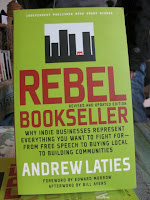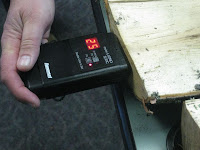It seemed to me that Congress was doing things exactly backwards. Why? Because it is dominated by special interests, in this case the fossil fuel industry. In my heart I knew something else was at play: Ordinary people were not asking their members of Congress for anything regarding climate change, not in an organized and effective way. Furthermore, they didn’t know what to do or how to do it, nor did they have self-confidence and support they needed. Citizens Climate Lobby’s purpose is to change all that by empowering individuals to have breakthroughs in exercising their personal and political power and by gaining the tools to be effective with government.
Basically, they get people together who are concerned about climate change and help them organize their message and get it to their representatives in Washington DC. Just like every other group that wants to successfully get their projects through legislative bodies. They meet once a month - the first Saturday - with local folks and and by phone to the National organization and the various chapters around the country and in Canada.
So, today is the first Saturday and Jim invited me to come to see what they were doing. The phone was out and we got to hear Dr. Katharine Hayhoe, atmospheric scientist and co-author of 'A Climate for Change: Global Warming Facts for Faith-Based Decisions.'
She was discussing how to talk to church groups about global warming. There were two things to avoid:
- The age of the earth. She said that some groups shut down if you talked about the earth being over 7000 years old and it wasn't necessary. There's enough data in the last 7000 years to make the argument for climate change.
- Al Gore. For some reason, the conservative faith based groups can't stand Al Gore, and to get through to many people you have separate him and global warming ideas.
These seem to be deeply held issues and spending time on them distract from the main message, so it's best to avoid them.
There were also things she says when talking to faith based communities:
- Her own faith in God and that humans are the stewards of God's creation - there's very little theology that needs to be agreed on here
- God created the earth
- Jesus gave us the responsibility to love our neighbors and care for the poor - and global warming is having the biggest harmful effects already on the poorest
I don't think she says it quite like that at synagogues, but the sense I got was that she was mostly focused on Christian denominations.
Then she had the elevator speech on global warming:
- The planet is warming, and it's not just thermometers, but also changes in birds, insects, trees, it's in everyone's backyards
- It's not like any previous cycle - if it were we would be getting cooler because the sun has been in one of its lower energy cycles which would should have cooled us
- Since the Industrial Revolution began, we've been producing heat capturing gases.
You can hear the whole discussion at their website. Or you can listen to past presentations from this page.
One of the issues that came up, that I was only vaguely aware of, was that various faith based organizations had come out with their own stands on climate change. The Catholic Church's Report came out in May and the NY Times reports:
"The widespread loss of ice and snow in the world's mountain glaciers is some of the clearest evidence we have for global changes in the climate system," concludes the analysis, which will be delivered to Pope Benedict XVI. It was assembled by an international team of experts at the behest of the Pontifical Academy of Sciences, the Vatican's non-denominational scientific arm.
The report warns of "serious and potentially irreversible impacts of global warming caused by the anthropogenic emissions of greenhouse gases, and by changes in forests, wetlands, grasslands, and other land uses," urging steep cuts in the world's output of heat-trapping pollutants.
Failure to do so will imperil vulnerable ecosystems and human societies that depend on glaciers for freshwater, it says, including a huge swath of Central Asia where mountain glaciers store water for millions of people. Inaction also leaves some communities vulnerable to flooding from unstable meltwater lakes that can burst without warning, causing outburst floods and mudslides.
"We are committed to ensuring that all inhabitants of this planet receive their daily bread, fresh air to breathe and clean water to drink as we are aware that, if we want justice and peace, we must protect the habitat that sustains us," the document continues. "The believers among us as God to grant us this wish."
Presbyterians also have a report acknowledging climate change and the need for mitigation.
Southern Baptists have a Declaration on the Environment and Climate Change that is relatively timid, but nevertheless acknowledges that humans have contributed to global warming. The have four statements:
- Statement 1
Humans Must Care for Creation and Take Responsibility for Our Contributions to Environmental Degradation. - Statement 2
It Is Prudent to Address Global Climate Change. - Statement 3
Christian Moral Convictions and Our Southern Baptist Doctrines Demand Our Environmental Stewardship. - Statement 4
It Is Time for Individuals, Churches, Communities and Governments to Act.
The American Baptists adopted a Resolution on Global Warming in 1991!
Jim Thrall also mentioned the One People, One Earth -- Anchorage conference being held today at UAA which brought together climate scientists, interfaith leaders, and Native elders. I'll try to get some video from that up later.




















